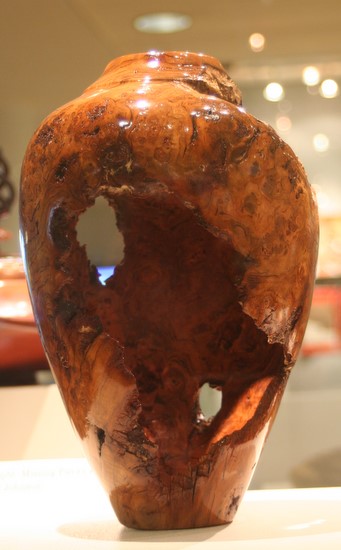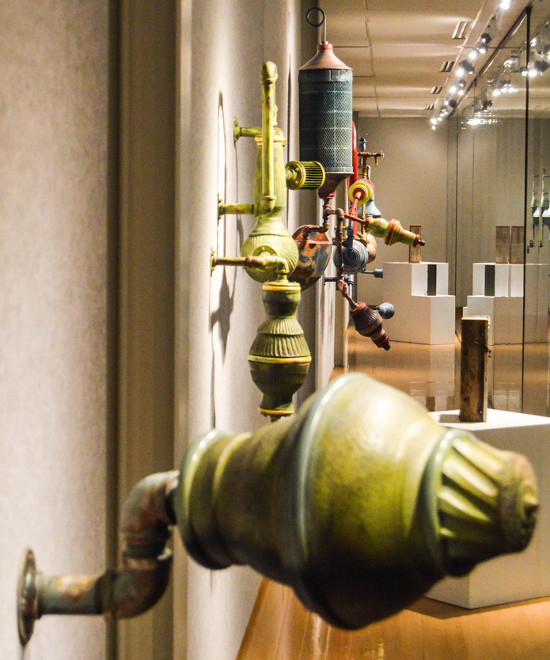 David Johnson's vase is missing large chunks.
David Johnson's vase is missing large chunks.
In the current Quad City Arts exhibit at the Quad City International Airport, the vase Missing Pieces #7 is symmetrical but for the voids that appear to have formed naturally through the growth and decay of its wood. Their jagged, random edges echo the blotchy rings of the wood grain, yet Johnson has varnished the entire surface, making it seem at once broken and new. The vase is not suitable for its ostensible purpose and seems to question the relationships between craft, aesthetics, and functionality. It's a striking use of the medium of wood.
The show, running through December, features two bodies of work: selections from the Quad Cities Wood Turners Club and mixed-media works by Jeff Stevenson. While the wood turners employ a relatively restrictive technique - modified wood in a functional context - Stevenson uses a massive range of media, from magazines to encaustic. The two components of the exhibit are different, but they both transcend the limitations of their methods: The best of the wood works (such as Johnson's vase) have visual and technical depth, and Stevenson's strongest pieces gel thematically and visually even as the variety of materials threatens chaos.
